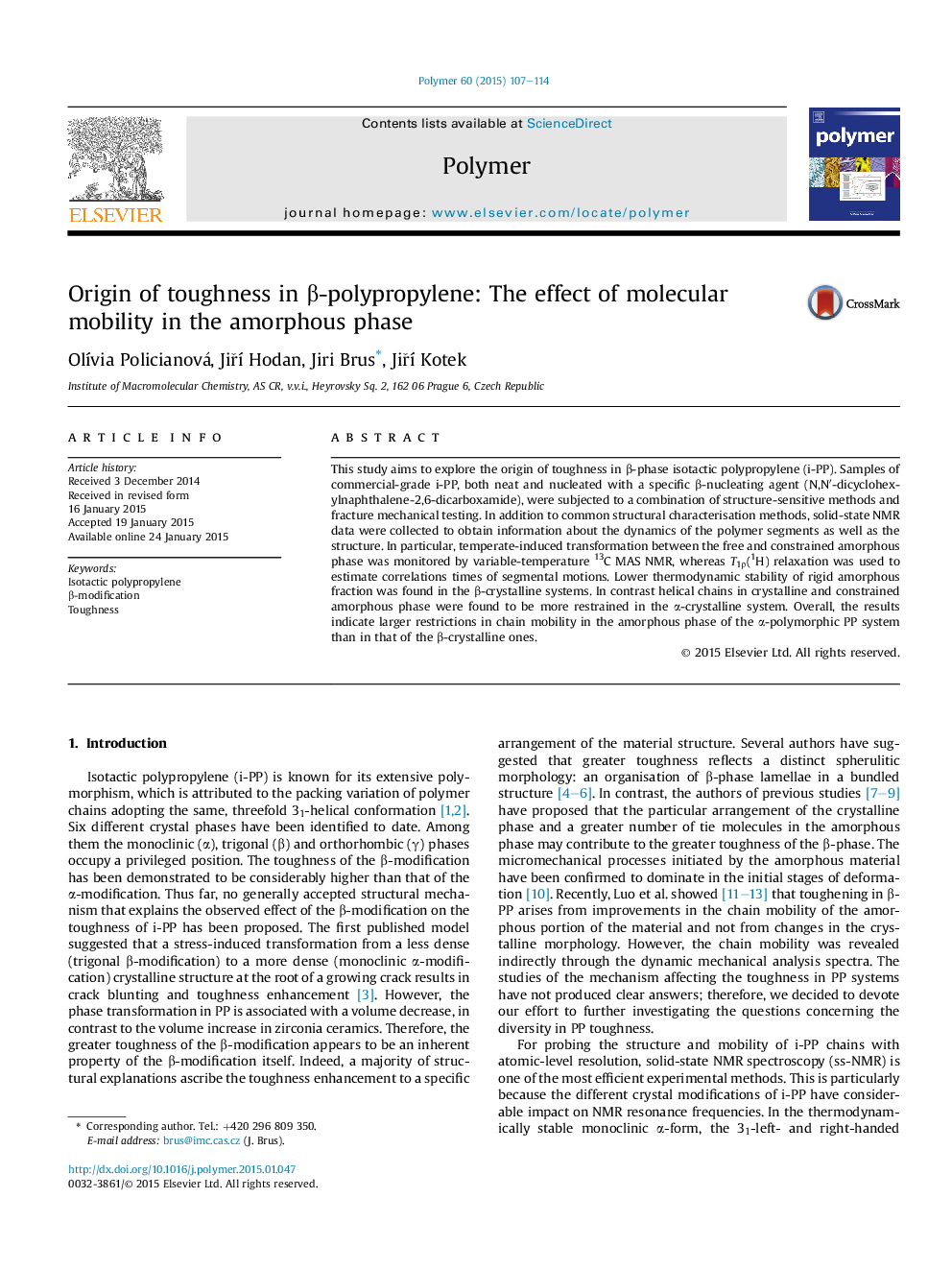| Article ID | Journal | Published Year | Pages | File Type |
|---|---|---|---|---|
| 5180223 | Polymer | 2015 | 8 Pages |
â¢Chain dynamics of α- and β-crystalline i-PPs probed by ss-NMR.â¢Transformation between the free and constrained amorphous phase was monitored.â¢Lower thermodynamic stability of rigid amorphous phase found in β-crystalline i-PPs.â¢Restrictions in dynamics of α-polypropylene systems revealed by T1Ï(1H) relaxation.
This study aims to explore the origin of toughness in β-phase isotactic polypropylene (i-PP). Samples of commercial-grade i-PP, both neat and nucleated with a specific β-nucleating agent (N,Nâ²-dicyclohexylnaphthalene-2,6-dicarboxamide), were subjected to a combination of structure-sensitive methods and fracture mechanical testing. In addition to common structural characterisation methods, solid-state NMR data were collected to obtain information about the dynamics of the polymer segments as well as the structure. In particular, temperate-induced transformation between the free and constrained amorphous phase was monitored by variable-temperature 13C MAS NMR, whereas T1Ï(1H) relaxation was used to estimate correlations times of segmental motions. Lower thermodynamic stability of rigid amorphous fraction was found in the β-crystalline systems. In contrast helical chains in crystalline and constrained amorphous phase were found to be more restrained in the α-crystalline system. Overall, the results indicate larger restrictions in chain mobility in the amorphous phase of the α-polymorphic PP system than in that of the β-crystalline ones.
Graphical abstractDownload full-size image
